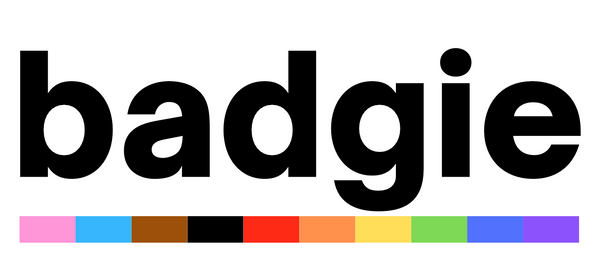Lesbians, queer women and non-binary people face unique challenges in the workplace. We already know the workplace is still adapting to provide the same opportunities for women as it does for men. For queer women, especially queer women of colour, the opportunities and obstacles can be even greater.
This week, we hope to shine a light on some of these inequalities, to encourage positive change in workplaces.
What does the research say?
Gay women are nearly twice as unlikely to be out in the workplace as gay men.1
Younger same-sex attracted women are less likely to be out in the workplace.2
LGBTQIA+ women of color are eight times more likely than straight white men to report 'onlyness' (being the only one on a team or in a meeting with their gender identity, sexual orientation, or race).3
LGBTQIA+ women hear sexist comments or jokes about their gender while at work 2.6 times more than LGBTQIA+ men and 1.5 times more than straight women.3
LGBTQIA+ women experience sexual harassment at work 1.9 times more than LGBTQIA+ men and 1.4 times more than straight women.3
LGBTQIA+ women are more than twice as likely to report unwanted touching at work as LGBTQIA+ men.4
So, what can we do about this?
There’s no magic band-aid fix, but there are some things you should be doing to make your workplace more inclusive for everyone. A 2018 study by PWC identified five key areas that can significantly affect the comfort of same-sex attracted women in the workplace: micro culture, the dual impact of gender and sexuality, perceived stereotypes, roles models and effective LGBTQIA+ networks.5Micro Culture: This is the day-to-day environment of your workplace and it can determine an individual’s sense of psychological safety. This culture can be positively influenced by authentic leadership that embraces diversity (in practice, not just in policy) and active daily symbols like ally stickers and lanyards.
Dual Impact of Gender and Sexuality: Many challenges faced by LGBTQIA+ women are intrinsically linked with challenges faced by women in general. In order to make positive change for LGBTQIA+ women, it is critical to also make progress with gender diversity initiatives within the workplace that focus on women and non-binary people. Though it is not mentioned in this portion of the study, we suggest similar approaches should be made with racial diversity initiatives as well, in consideration of LGBTQIA+ women and non-binary people of colour.
Perceived Stereotypes: Stereotypes of same-sex attracted women are narrow and not reflective of the diverse population. Further, within the study, 72% of women highlighted negative stereotypes as the biggest barrier to being out at work. It’s important to challenge existing stereotypes and share diverse stories of lesbian women and non-binary people.
Role Models: Out lesbians in senior positions are critical to provide a sense of belonging and vision for the future. If you foster an inclusive workplace in which people are comfortable to be (and celebrated for being) their authentic selves, the positive change can be exponential as these role models inspire others.
Effective LGBTQIA+ networks: It is not enough to set up an LGBTQIA+ network for your workplace. Participants in the study confided these networks were often dominated by gay men and offered them little appeal. To ensure networks are accessible to and offer purpose to LGBTQIA+ women and non-binary people, it is vital they are included in planning and leadership committees or roles.
For a more detailed breakdown of the report and workplace recommendations, read PWCs full report here.
How can Badgie help?
To make a start towards improving your workplace micro culture, introduce pride symbols into your day-to-day environment. Badgie offers Starter Packs inclusive of pride flags and pronoun stickers, perfect for work badges or ID cards, as well as pronoun lanyards. The lesbian flag is available as both a sticker and a pin.
Celebrate Lesbian Visibility Week
Since 2008, Lesbian Visibility Day has been celebrated annually on 26 April during Lesbian Visibility Week. An earlier version of Lesbian Visibility Week was first celebrated in West Hollywood, LA during July of the 1990s to drive awareness and celebration of lesbian identities and communities.6
Lesbian Visibility Week is a time to celebrate lesbian women and non-binary people, lift marginalised lesbian voices, and build awareness for current and upcoming challenges facing their community.7 With society’s history of championing cis men both in and outside the LGBTQIA+ community, it’s important to consider what issues affect lesbians differently and/or in a greater capacity.
A note from the author: where sources have used specific terminology i.e. ‘same-sex attracted women’, we have kept this terminology in the discussion of results and statistics to avoid misinterpreting the data. However, where possible, we seek to use the most inclusive language.

Kate is a queer writer living in Naarm. She is a book and cat lover with a degree in Creative Writing. You can find them at the beach in any weather.
References
- Pride matters report (2018), prideinlondon.org
- Where are all the women (2018), www.pwc.com.au
- Women in the workplace (2019), womenintheworkplace.com
- Sexual harassment of LGBT people in the workplace (2019), www.tuc.org.uk
- Where are all the women (2018), www.pwc.com.au
- When is Lesbian Visibility Week 2023 and what does it mean (2023), heckinunicorn.com
- Lesbian Visibility Week website (2023), www.lesbianvisibilityweek.com

